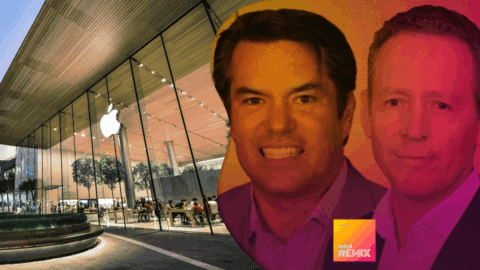Editor’s Note: This article is an excerpt from one of RetailWire’s recent online discussions. Each business morning on RetailWire.com, retail industry execs get plugged in to the latest news and issues with key insights from a panel of retail industry experts.
During the time around Labor Day, the retail industry’s focus is on sales and not the original intention of the holiday — to celebrate American labor and its historic role in making the nation great.
But taking a step back, retailers really should address the question: So what is the state of labor in the retailing business?
The retail industry, like others, has its problems, with a workforce largely made up of part-timers who work terrible hours for low wages and few benefits. The combination of unmotivated and sometimes poorly trained workers and managers under extreme pressure to succeed has created issues in some stores.
Retailing also suffers from an upper management disconnect. As covered many times on RetailWire, top executives often do not have a true understanding of what workers deal with in stores. Unlike in the past, many top execs are more likely to come from MBA programs than up from the ranks.
Like other industries, compensation of upper-tier executives has grown at an exponentially faster rate than front line workers. A few businesses — Whole Foods comes to mind — have taken steps to tie executive compensation to what workers within the chain make, although even here the C-suite is growing at a faster rate than store employees.
In 2006, Whole Foods increased its salary cap from 14 times the average pay of all full-time employees to 19. That number was nearly twice the cap (10x) Whole Foods had in place in 1999. The average hourly wage for full-timers at the chain between 1999 and 2006 grew from $12.36 to $15.38.
The debate over benefits and how to control health care costs remains contentious within the industry. Major grocery chains in Southern California and the United Food and Commercial Workers seem, almost unbelievably to outsiders, on the brink of another work stoppage. An employer lockout followed by a strike in 2003/2004 was extremely damaging to Albertsons, Kroger and Safeway with the chains estimated to have lost $2 billion, not to mention the hardship faced by workers not pulling in their regular paychecks.
Not all labor relationships within retailing suffer from animosity or, perhaps worse, apathy. There are many broad exceptions: Costco, Container Store, Trader Joe’s, Wegmans, Zappos and others are often given high marks for employer/employee relationships.
Ultimately, however, many retail businesses see and treat workers as expenses to be contained and not assets to be exploited. They do this even as they proclaim, almost in unison, that their front-line workers are most important to performance.
Nearly all participants in the RetailWire discussion agreed that overall, retail workers receive fewer benefits than other working citizens. “The article did a great job of summing up the state of labor: low pay, high pressure, few benefits, with managers that don’t understand retail,” said Max Goldberg, Founding Partner of The Radical Clarity Group.
Other feedback from the discussion includes:
Doug Stephens, President of Retail Prophet agreed that due to low-level treatment of retail employees, the overall in-store experience will suffer and in-turn, become a detriment for retailers. “The economic distance between the average retail worker and the customers they’re asked to serve has never been wider,” he said. “At a median hourly wage of $9.34/hour, the average retail employee is living close to or below the poverty line depending on their home state and family obligations. Meanwhile, we hear survey after survey citing how poor customer service is. It’s simple math — you get what you pay for.”
Roy White, Business Development Executive for RetailWire added that regardless of Internet channels such as social media and their effect on the retail industry, the in-store experience will reign supreme. As a result, retailers should focus on hiring employees that best represent their company image and are eager to provide optimal customer service. “The story says it all, and the tragedy is that the store associates are totally, utterly and completely a retailer’s face to its customer base, and how they act and interact with shoppers determines in large part how customers feel about that store.”
White continued: “Deployment of all the social media in the world backed up by beautiful web sites isn’t going to alter this. The story is also correct in that retail management does recognize the importance of store associates but then, quite frankly, treats them merely as chips to be contained and economically expensed. Is there a solution for the low margin channels in retailing such as supermarkets, mass merchants and drug stores? In a labor market wealthy with candidates, it would seem an ideal time to be able to pick and choose competent and willing employees to make store teams hum the way they should.”












